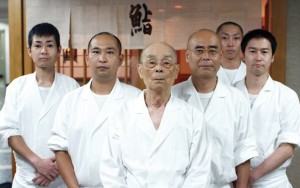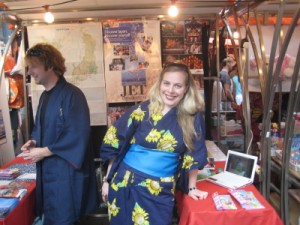JQ Magazine: JQ&A with JETAA Country Representative Megan Miller Yoo

“I can’t ever say this enough, but working with the JETAANY executive committee has been an amazing experience. We have such a great team of dedicated volunteers who really want to see the organization succeed and will go to great lengths to make sure that happens.” (Katharine Andriotis)
By Renay Loper (Iwate-ken, 2006-07) for JQ magazine. Renay is a freelance writer and international education professional currently seeking FT opportunities. Visit her blog at Atlas in Her Hand.
Philadelphia native and current Long Island City, NY resident (by way of Hyogo-ken and Washington, D.C.), Megan Miller-Yoo (Hyogo-ken ALT, 2000-02) is the outgoing president of JETAANY (2008-11) and new JETAA USA Country Representative (CR). During her time as an ALT, Megan demonstrated her commitment to the JET Program via her creation of the Volunteer Special Interest Group (VSIG) for AJET.
Since returning to the U.S., Megan has been involved in the Washington D.C., Philadelphia, and New York chapters of JETAA. Megan also served on the Board of Directors for JETAANY. She recently graduated from NYU with her MBA, currently works as an engineering underwriter, AVP with Swiss Re and lives in Long Island City with her husband.
Megan recently spoke with us to share more about her time as JETAANY president, and her new role of CR.
Where did you spend your JET years?
I was an ALT in Hyogo-ken from 2000-02. I worked in the suburbs of Akashi (home of the world’s longest suspension bridge and famous for its tako), which is along the coast between Kobe and Himeji.
You recently finished your third term as JETAANY’s president. How did you get involved with JETAANY?
I moved to New York in November 2005, on the day of the New York City Marathon, which made navigating my U-Haul truck through the city pretty awful. After a year in the city I still did not have a strong network, so I researched JETAANY and showed up at a quarterly meeting being held at Two Boots pizza in early 2007. I was hooked right away and with impending officer elections, Kat Barnas convinced me that very night to take over her spot as vice president. I served as VP from 2007-08 and then moved into the president role for the next three years.
During your tenure, what brought you the most joy?
I can’t ever say this enough, but working with the JETAANY executive committee has been an amazing experience. We have such a great team of dedicated volunteers who really want to see the organization succeed and will go to great lengths to make sure that happens. When you consider that we all have full-time jobs but everyone finds time to make JETAANY events the same caliber as something you’d pay to have done, you start to understand the impact that Japan had on us and how eager we are to give back.
What do you hope your JETAANY legacy will be?
During my tenure I strove to ensure that we delivered high caliber events and benefits to our member base. From the upgraded format of the e-mail announcements and website to the diversity and quality of events, I encouraged everyone involved in the organization to really give it their all and do the best job they could. I believe that people have started to realize what JET alums are capable of and what the value of our network is to Japan, to our home countries, and also to us as members of the network. We are a group of diverse, talented professionals who can really make an impact wherever we choose to focus our efforts, and my goal was to showcase that in everything we did.
How did you go about becoming a CR? What made you make the switch? Read More
Justin’s Japan: Interview with Inuyama City Councilman/JET Alum Anthony Bianchi
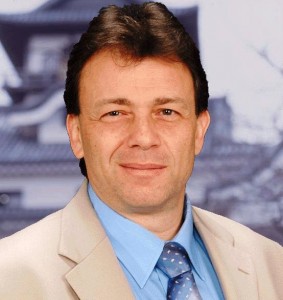
- “The JET Program has great benefits for the country. One of the greatest, but overlooked is the former participants themselves. They all have a great knowledge, understanding and affection for Japan. All have gone on to various careers and are a great but underutilized network.”
By JQ magazine editor Justin Tedaldi (CIR Kobe-shi, 2001-02) for Examiner.com. Visit his page here to subscribe for free alerts on newly published stories.
Anthony Bianchi’s life in Japan took root in the 1980s when the Bensonhurst, Brooklyn native landed a job with the Inuyama City board of education in Aichi Prefecture on the JET Program exchange initiative. He continued to work in Inuyama after JET, and in 2003 gained citizenship, becoming the first-ever North American to hold an elected position in Japan.
In 2006, Bianchi ran for mayor of Inuyama, receiving enough votes to finish third out of eight candidates. He was re-elected to city council in 2007 and started his third term in April. Following a benefit concert for Japan at his alma mater Xaverian High School on March 31, I caught up with the politico in this exclusive interview.
What’s changed for you since you last spoke with JETAA NY in 2008?
I was just reelected for a third term. There are now only four council members with more years on the council than I. That changes the dynamics a bit. How much so we will find out over the next few years. Other than that, local front burner issues have changed, but the job stays pretty much the same. That being said, of course the earthquake and tsunami have changed the country. As a council member in a municipality that was not directly affected, we have to keep in mind what we can do to contribute to the recovery while maintaining necessary levels of service for the people of the city.
How has the election of the Democratic Party of Japan in 2009 changed the way you and your colleagues work in Inuyama?
Unfortunately, not very much. They have been mostly unable to implement their manifest. Due to that they have been soundly defeated in local elections. Keep in mind that the recent local elections were the first since the DPJ took power. The significance of that is that most localities still had a pre-DPJ administration makeup. So they have even less local influence now than they had before they took power. Unless there is a dramatic change in the way they govern, they will loss power in the next lower house elections. A tremendous chance to make significant change has been squandered. What the aftermath will be remains to be seen, but I am afraid it will not be good.
How has the election of President Obama changed any impressions or attitudes of the average Japanese citizen?
Of course, the election of Mr. Obama was watched with great interest here and welcomed. For lack of a better description, it was seen as America becoming a more forward thinking, open and kinder society. You must remember that just as Americans are not cognizant of Japanese political national and domestic issues, so are Japanese not cognizant of America’s. That being the case, President Obama’s election was viewed for its social implications by the Japanese.
What are some of the biggest changes in the JET Program that you’ve observed over the years? Do you work with any JETs?
I sometime talk to those who administrate the program or former participants, but it has been a long time since I was a JET. I really don’t know what things are like on an everyday basis for current participants, and there are no JETs in Inuyama.
In Inuyama I started a program based partly on my JET experience. It is called the Native English Teacher (NET) Program. I started and ran it for seven years before leaving to run for office. The program continues to this day and has six teachers all directly employed by the city. The teachers here must have some ESL qualification. Currently, all teach their own classes based on original materials created by the group.
Although we had some tough going in the first few years, the participants here are pretty much accepted as regular teaching staff at their schools.
Tokyo has mulled budget cuts for the program that may threaten its existence. What are some of the positive effects of JET that you can share with your colleagues in local government to help quantify its value?
I think the program did not get proper considerations during its evaluation by the oversight committee. Although I think JET could use some retooling and needs to redefine its goals, the program has great benefits for the country. One of the greatest, but overlooked is the former participants themselves. They all have a great knowledge, understanding and affection for Japan. All have gone on to various careers and are a great but underutilized network.
For the complete interview, click here.
Justin’s Japan: Q&A with Grammy Winner Marcus Miller on His Concert for Japanese Tsunami Relief

- “Japan has been a really beautiful place for a musician to play jazz. And so when I heard about the disaster, I said, man, I’d love to be able to give back a little bit.” (Andrew Dunn)
By JQ magazine’s Justin Tedaldi (CIR Kobe-shi, 2001-02) for Examiner.com. Visit his page here to subscribe for free alerts on newly published stories.
Born and bred in New York, Marcus Miller is a multi-instrumentalist, songwriter and producer who’s worked with everyone from Miles Davis to Luther Vandross to Frank Sinatra while waxing a score of records on his own. On May 15, the Grammy winner returns home to New York’s Highline Ballroom for a special one-night all-star benefit concert to provide financial relief and support to those devastated by the recent tsunami tragedy in Japan.
“Marcus Miller Presents: A Concert for Japanese Tsunami Relief” will feature performances by cutting edge artists from around the globe and across the musical spectrum, including African vocal superstar Angélique Kidjo, hip hop/jazz pioneer Q-Tip, trumpeter Wallace Roney (Miles’ heir apparent), drummer Ahmir “Questlove” Thompson (of the Roots), and taiko drummer/bamboo flautist Kaoru Watanabe, among others. In this exclusive interview, I spoke with Miller about the show, his three-decade history with Japan, and other high points of his career.
How did this benefit concert come together?
I heard about what was going on over there, and was trying to figure out—probably like a lot of people—what can I do? And I figured, you know what? I might be able to put together a benefit concert to try to raise some money, because at the time [of the earthquake] it seemed devastating, and as the weeks have gone by we actually realized it was much worse than we thought, with all this radiation and stuff. So you just want to do whatever you can to help, and show everyone that we’re thinking about them and trying to support them.
How did you choose the performers?
I just wanted to try to present something that was unique, you know what I mean? That kind of represented New York, because there’s a whole lot of different things going on in New York, and this is where I’m from. I thought it was a nice opportunity to bring a lot of different elements together.
Tell us about your history with Japan.
I first when to Japan when I was nineteen years old. I went with a saxophone player called Sadao Watanabe, who was the first Japanese musician to go to Berklee College of Music in Boston; one of the really early jazz musicians. And he’s really, really famous over there, you know, like a national icon. So it was a great introduction to Japan, because we went to every city in Japan—we went to the Japanese cities that Japanese people haven’t been to.
So I got a taste of the country and a taste of the culture, and I’ve been going back ever since. I’ve been there with the Brecker Brothers; I’ve been there with Miles Davis; I’ve been there with my own groups; with Herbie Hancock. And their appreciation of American jazz is just incredible—at first you can’t believe it, because they know every record that you’ve ever played on. I’ve had people waiting for me in hotel lobbies with a stack of a hundred LPs, and they want me to sign each one because I played on each one of them, you know? I sat there in the hotel, man, for an hour (laughs) signing LPs just because I admired their enthusiasm so much. So it’s been a really beautiful place for a musician to play jazz. And so when I heard about [the disaster], I said, man, I’d love to be able to give back a little bit.
What are some of your favorite memories of Japan?
My early memories—anybody who’s visited Japan probably has the same memory—first is the incredible jetlag. Staying up all night, and then wanting to go to sleep right before your concert, you know? If you ever saw Bill Murray in Lost in Translation, sitting on the edge of his bed in the middle of the night, everybody goes through that (laughs). But also, how generous their culture is; it’s very polite. Everyone is bowing to everyone, and when you get back to the States after you’ve been in Japan, you’ve got to remember to stop bowing, because then people think there’s something wrong with you, you know? The food is always a trip, interesting, and learning how to use chopsticks.
And the fact that they never really say “no” in Japan. Like if you walk into a store and say, “Do you have size ten shoes?” they shake their head yes and say, “Yes, I don’t think we have any,” you know what I mean? (Laughs) You begin using that. And like I was talking about, the enthusiasm for music is incredible there, and the beauty of the country—we go from city to city on the high-speed trains, so you get to really see in between the two cities; you get to see all these incredible fields and flowers and rice fields and workers in the traditional kind of Japanese clothes. It’s a really beautiful country. So those are the kinds of things that strike me about Japan.
You mentioned Sadao Watanabe before. Do you have any other favorite Japanese musicians?
There’s a guitarist named Kazumi Watanabe. I guess Watanabe’s a pretty common name, but Kazumi Watanabe’s a musician that I went to Japan with who’s also a great guitarist. I’ve played with a bunch of great Japanese American musicians—Teruo Nakamura was my first Japanese American musician who I played with and really learned a lot from; he’s a bass player. But they have some incredible Japanese musicians—I played with a Japanese koto player who plays the traditional instrument in a very contemporary style, very cool.
Read the complete interview here.

Jim Gannon (Ehime-ken, 1992-94), Executive Director for the Japan Center for International Exchange.
By Renay Loper (Iwate-ken, 2006-07). Renay is a freelance writer and international education professional currently seeking FT opportunities. Visit her at Atlas in Her Hand.
JET alum Jim Gannon (Ehime-ken, 1992-94) is the executive director of the Japan Center for International Exchange in New York. A Columbia graduate who previously worked for the for the Japan Bank for International Cooperation, he penned last year’s “JET Program on the Chopping Block” article, which helped alert and educate JETs and JET alumni to the threats facing the future of the JET Program. Since then, he has served as an invaluable resource to the JET Alumni Association, providing informal advice and perspective and serving on the JETAA New York Board of Directors.
How has your day-to-day work with JCIE been affected by the Tohoku catastrophe?
It has been a whirlwind since the morning of Friday, March 11, although fortunately all of our friends, family, and coworkers in Japan are safe. On the Japan side, JCIE has been working for decades to strengthen Japan’s nonprofit sector. That gives us a strong base of knowledge in this area, plus we have extensive experience channeling philanthropic contributions from overseas to Japanese organizations, and have also have been working closely for years with the country’s major humanitarian organizations, which have now mobilized to respond to the disaster. Meanwhile, on the U.S. side, JCIE is one of the few Japanese nonprofit organizations with a strong American presence which can receive tax deductible donations. This has put us in a unique position to be able to help.
On day one, we were asked to advise major U.S. humanitarian organizations trying to get into Japan to help, and we have since been working long hours to contribute on various fronts. To take advantage of our understanding of who is who in Japan’s nonprofit sector and the capacity to fundraise in the United States, we established a set of funds to aid Japanese nonprofits on the frontlines of the relief and recovery efforts. The amount of money committed to these by American donors has reached almost $2 million, and most of that is already reaching Japanese communities. The main fund, the Japan NGO Earthquake Relief & Recovery Fund, splits donations up 50-50 between immediate relief efforts and the types of long-term recovery efforts that are absolutely vital, yet typically underfunded, and we will be increasingly focusing on supporting the long-term recovery. In addition to this, we have also been working with a wide range of U.S. foundations, companies, and experts to discuss how to better coordinate the U.S. philanthropic approach to the Japanese disaster. So, my plate has been very full, but we felt we had an obligation to do this given our unique capacity in this area.
What is the mood of the country, generally speaking, since the events?
Difficult to answer, since I have not been there since the disaster. However, my conversations with colleagues and friends indicates that, while people are on edge due to the continuing aftershocks and the radiation risk, there is a deep conviction of the need to rebuild, and extraordinarily selfless efforts by people from all over Japan to do what they can to help. But I can’t talk definitively on the mood from my own experience.
What are JCIE’s priority areas for rebuilding?
In terms of short-term relief efforts, it is critical to empower communities in Japan to help themselves, and this becomes even more important when talking about the long-term recovery. It is essential for local nonprofit organizations—a group that extends far beyond the Red Cross—to be able to play roles if communities are going to be equipped to rise to this challenge. But Japan’s philanthropic sector is weak, and government and business often overlook the nonprofit sector in Japan. This is why we are placing priority on getting funding and other support to a wide range of organizations that are Japanese-run and that are truly nongovernmental and nonprofit in nature.
Justin’s Japan: Interview with Author Arudou Debito on His Debut Novel “In Appropriate”
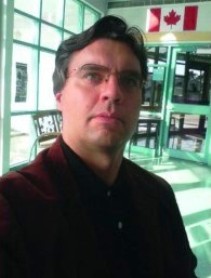
"I’m told Debito.org remains the resource for many JET Program participants looking for advice or needing an alternative perspective on Japan. See my speech to HAJET in 1999 on 'survival strategies in Japan,' which has apparently been reprinted in several JET publications." (Arudou Debito)
By JQ magazine’s Justin Tedaldi (CIR Kobe-shi, 2001-02) for Examiner.com. Visit his page here to subscribe for free alerts on newly published stories.
Divorce is tough, but divorce in Japan—especially if you’re a foreigner with kids—is a nightmare, explains Sapporo-based author Arudou Debito in his new book, In Appropriate: A Novel of Culture, Kidnapping, and Revenge in Modern Japan.
Originally raised in rural upstate New York as David Aldwinckle, Debito is a 23-year resident of Japan who obtained Japanese citizenship (and a name change) in 2000. As the Just Be Cause columnist at The Japan Times newspaper, his nonfiction books include Handbook for Newcomers, Migrants, and Immigrants, and Japanese Only: The Otaru Hot Springs Case and Racial Discrimination in Japan.
A longtime watchdog for foreigners’ rights in Japan, Debito’s first English-language novel takes a scalpel to the polite, friendly façade that tourists typically experience. In Appropriate examines the downright ugly aspects of Japanese life when a father is cut from all ties with his children post-divorce, which is not only common in Japan, but upheld by 19th century law. In this exclusive interview, Debito discusses his personal experiences that inspired the book, his history as an activist, and his thoughts on the future of Japan.
You’ve been known as an activist for over a decade and have published non-fiction works on the subject. What inspired you to write about child abduction in Japan, and what were your goals?
My goal with In Appropriate was to expose a dire social problem, as usual. But this time I thought fiction would be the better medium. Doing what I do, I hear a lot of stories about broken marriages in Japan, and having gone through a nasty divorce myself (seeing my children only about six times since 2003), I know a little bit about child abduction. What goes on in Japan beggars belief, but it’s hard to zero in on one non-fiction case and expect it to cover the scope of the problem.
Although international child abductions in other countries have gotten some press, the situation in Japan is much, much worse. Child abductions and parental alienation in Japan are, in a word, systematic—meaning they are hardly uncommon between Japanese, too (former prime minister Junichiro Koizumi is a famous example; he never saw one of his sons for nearly two decades). One parent after a divorce is generally expected to disappear, and have little to no contact with the children anymore. In Appropriate was meant as a primer to the issue.
Japanhas no system of joint custody or guaranteed visitation rights, and under this system I cannot recommend anyone, Japanese or non-Japanese (NJ), get married under it and consider having children. The risk is too great. We need fundamental reform of the Family Registry System and the laws governing divorce and child custody first.
Give us a basic overview on the phenomenon of kidnapping and left-behind parents in Japan.
It works like this: Japan’s divorce laws have been fundamentally unaltered since 1898(!), meaning modern-day common-sense divorces based upon “we just don’t like each other any more,” aka “irreconcilable differences,” don’t fly in Japan’s Family Courts. Fact is, if both sides don’t agree to a divorce, one side will have to portray the marriage as a living hell (even when it wasn’t) in public just to satisfy the requirements, inspiring vindictiveness in the other side. (Read more at www.debito.org/thedivorce.html.)
So after a successful split, one parent (usually the mother) gets the kids, and they are put on her Family Registry (koseki). Hers only, as Japan’s laws do not permit registry of people on two koseki. This means the other parent (usually the father) has no title or custody to the children (for example, I couldn’t even get an audience with my daughters’ junior high school teachers to see their grades). Access is granted only at the whim of the mother; I haven’t so much as seen a new photograph of my kids for about five years now. Even if the father goes to court to get a ruling guaranteeing visitation or access, if the mother again decides to make excuses for denial of visitation (or worse yet, levies a claim of “domestic violence”), the father will have to go to court again to get his rights enforced. Given that Japanese courts take months or years to hand down decisions, his kids will in the interim grow up alienated and never hearing his side.
This is what happens on a domestic level between Japanese. Now add the dimension of international marriage, where the NJ parent may have visa issues, face a language/culture barrier, or be communicating from overseas, and you have a more complex case. (More information via the Children’s Rights Network at www.crnjapan.net.)
Why did you choose the fiction novel format?
Because no single non-fiction case would capture the complicated dynamics of this issue properly. Besides, In Appropriate is about more than just divorce: I wanted to describe how a person would find a fascination in Japan and Japanese people, come over during Japan’s Bubble Era to see Japan ripe with opportunity, and find how Japan went sour as an economy over the past two decades. It was wonderful for me to recount this as a Bubble Era veteran—when in the late 1980s Japan looked poised to take over the world, was even challenging notions of how capitalism worked. Then see how, step-by-step, Japanese society would be squeezed and squeezed, convinced that recovery was right around the corner, just like Godot. How a person could become an immigrant to Japan—assimilating himself to the point of founding his own company, becoming bilingual in Japanese, even taking Japanese citizenship, yet be blindsided by events that were nearly always beyond his control. In Appropriate is much more than just a story of divorce—it’s a time capsule charting Japan’s descent into mediocrity and comparative international irrelevance. That’s best portrayed in a novel format.
What are some of your proudest moments at Debito.org since it went online, and why?
After a quiet start in 1997, Debito.org has been one damn issue after another. But in terms of sustainability, I gave a running commentary on the Otaru Onsens Case (www.debito.org/otarulawsuit.html) nearly weekly, sometimes daily, for four years; Debito.org as a source received enormous international media attention. Then Debito.org converted to a daily blog in 2006; I’ve done 2,000 more essays since (which means a total of probably about 5,000 archival materials by now).
I’m told Debito.org remains the resource for many JET Program participants looking for advice or needing an alternative perspective on Japan (see my speech to HAJET in 1999 on “survival strategies in Japan,” which has apparently been reprinted in several JET publications, at www.debito.org/HAJETspeech.html). Debito.org has been the launching pad for many a major media news story, in Japanese, English, and several other languages. It’s given a modicum of credibility to the oft-shaken belief that “the debate in Japan about internationalization and immigration” still exists unabated.
For the complete interview, click here.
Justin’s Japan: Interview with “Japanamerica” Author/JET Alum Roland Kelts on “Monkey Business”
By JQ magazine’s Justin Tedaldi (CIR Kobe-shi, 2001-02) for Examiner.com. Visit his page here to subscribe for free alerts on newly published stories.
Taking its name from the immortal Chuck Berry tune, the debut English-language edition of Monkey Business: New Voices from Japan is based on the annual Tokyo-based Japanese literary magazine founded in 2008 by award-winning translator, scholar, editor and author Motoyuki Shibata, one of Japan’s best known and most highly regarded translators of American fiction. The first installment offers poetry, Kafka-adapted manga, a wide-ranging, in-depth interview with Haruki Murakami, and much more. And despite its mischievous title, twenty-five percent of all Monkey Business sales will go toward the Nippon Foundation/CANPAN Northeastern Japan Earthquake and Tsunami Relief Fund.
Roland Kelts (Osaka-shi, 1998-99) is the author of 2006’s Japanamerica: How Japanese Pop Culture Has Invaded the U.S. and a curator and editor for Monkey Business. A weekly columnist for The Daily Yomiuri, commentator for National Public Radio, and teacher of Japanese popular culture at New York University and the University of Tokyo (he splits his time between both cities), Kelts is back in town this week for the new book’s launch, beginning April 30 at Asia Society, May 1 at BookCourt in Brooklyn, and May 3 at Japan Society. I caught up with Kelts during his recent appearance at Seattle’s Sakura-Con for this exclusive interview.
How did you get involved as an editor and curator for this book?
My dear friend, Motoyuki Shibata, Japan’s premier translator of American literature, talked to me two years ago about publishing an English-language version of Monkey Business, his literary magazine. As an editor at A Public Space, a literary magazine based in Brooklyn, I was keen to build another bridge between the two countries. I talked at length with Brigid Hughes, the founding editor of A Public Space, and she was interested. Then we received a grant from the Nippon Foundation, and the Japan Foundation, the Asia Society and the Japan Society all supported our project. I am deeply grateful to all parties involved.
What can readers expect from the book?
The freshest, newest, most exciting contemporary literature, poetry and manga from Japan, plus some American voices, like Barry Yourgrau, who have emerged as major American authors in Japan.
How did you select the pieces to be selected for the English version?
Motoyuki Shibata, Ted Goosen and major translators like Jay Rubin (Haruki Murakami’s translator) and Michael Emmerich all created the final manuscript. Shibata and Goosen then sent it to me and Brigid Hughes, and we had several conversations in order to select the best material for an American readership.
What are the biggest challenges of translating and editing Japanese creative writing into English?
It’s not as simple as it sounds. You need to choose the material that will speak to American readers, who, after all, are limited and defined by their cultural context. Not every successful book in Japan will speak to American readers. You need cultural authorities on both sides of the Pacific Ocean to make a valuable publication.
You’ve been working on a novel of your own called Access for years now. What can you tell us about it, and how’s it coming along?
Very close to completion. I think it’s a masterpiece, but I’m partial, of course. It’s a cross-cultural narrative built upon sex and longing—both close to my heart.
As a participant of Japan’s international exchange-based JET Program, what were your biggest takeaways from your experience that you’ve applied to your career today?
I learned how to live and work in Japan—an invaluable lesson.
Read the rest of the interview here.
JQ Magazine: JQ&A with Tomoya Suzuki of CLAIR New York’s Japan Local Government Center
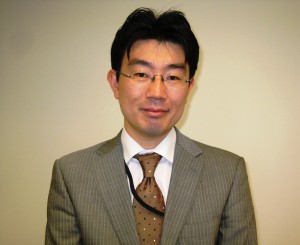
“As a staff member at the JLGC, working with the JET Alumni Association is my first and foremost top accomplishment. I have been able to learn how a volunteer group works in American society, and I am impressed by the alumni’s passion and devotion for its activities to be a bridge between the U.S. and Japan.” (Justin Tedaldi)
By Renay Loper (Iwate-ken, 2006-07). Renay is a freelance writer and international education professional currently seeking FT opportunities. Visit her at Atlas in Her Hand.
I recently had the pleasure of doing a brief Q&A with Mr. Tomoya Suzuki of the Japan Local Government Center (JLGC), CLAIR’s New York branch office dedicated to international exchange and mutual understanding between the U.S. and Japan. Suzuki-san has been working with the JLGC in New York since April 2010 through a temporary overseas assignment with the Tokyo Metropolitan Government (TMG). Suzuki-san lives in New York with his wife and son.
Tell us a little about yourself.
I was born and raised in Chiba Prefecture and moved to Tokyo soon after I started working for TMG. I came to New York for the first time in April 2010, so I have been here for just one year. I am so happy and proud to be living and working in this exciting city!
You are an assistant director at the JLGC. What is your primary focus?
I would say my foci are as a staff member of the JLGC and as a representative of TMG. As a staff member of the JLGC I want to tell Americans, especially local governments, the good points about Japan and its people. As a representative of TMG, I want to facilitate the relationship between Tokyo and New York City, who have one of the oldest sister city relationships—it has been in existence since 1960. Read More
National AJET’s “Life After JET”: Sabrina Venture
 National AJET shares former JET participants’ experiences – and a little advice – with current JETs in their new monthly interview, Life After JET. Contact lifeafterjet [at] ajet.net to be featured in future posts.
National AJET shares former JET participants’ experiences – and a little advice – with current JETs in their new monthly interview, Life After JET. Contact lifeafterjet [at] ajet.net to be featured in future posts.
*************
This month, we caught up with a recent JET-Alum, Sabrina Venture. Before JET, Sabrina was a painting major looking to pay off her student loans. As such, she took a job with a Police Department as a dispatcher. She “sought out that job since it had governmental security and lots of perks (never a parking ticket!), good pay, and offered an education pay program.” However, after two years, she was burnt-out — “too many people dying and too much drama and sad stories” — and looking for a break.
That’s where JET came in. Sabrina moved to Kyoto for a year in 2009. She “would have stayed on the JET program but [she] had a fiancé waiting for [her] so [she] returned to the states. [She] took a month off for [her] wedding and applied to other agencies to go back to dispatch.” By then, she was feeling less burnt-out and found a position in a quieter area. “It’s a smaller agency, quieter than New England, and [she’s] living in an adorable apartment right in downtown.”
Sabrina tells us a little bit about her transition back to her previous career in the States (and how she’s infused it with a little of her Japan-experience) and how she keeps her creative juices flowing…
NAJET: Have you experienced any reverse culture shock since coming back? (You’ve probably been keeping busy with the wedding and finding a job and everything, so maybe you haven’t had a chance to worry about that!) If you have, how did you deal with it?
Sabrina: Culture everything-is-cooler-in-Japan shock. I dunno. I really, REALLY miss the beauty of the natural surroundings. I don’t miss the crowds in downtown. I can also go back — maybe not with JET, but there are other ways to get into Japan. I don’t consider JET my one and only shot at time in Japan and knowing I can always go back helps keep any culture shock in check.
NAJET: You’ve returned to a career that you had before JET, does it feel different? I know you said your time on JET helped you get over some of your burnout — but is there anything else? A new perspective?
Sabrina: I returned to the same career — but not at the same place — and I had to take a pay cut due to financial restraints in the county. That sucked. It still sucks. But I DO have a job, and a nice place to live, and while I’m not swimming in cash, I have enough to cover my needs and still save. My time in JET helped my remember to appreciate the things I do have and relax about things I don’t.
I think that before I left I was really focused on the bottom line and early retirement — I was so focused on earning as much as possible that I worked in neighborhoods that were dangerous and dirty. After JET, I’m more focused on the non-monetary aspects to quality of life — I consider things like population, crime rate, natural beauty now instead of just money.
Click here for the rest of the interview.
Justin’s Japan: Tribeca Film Festival Q&A with director David Gelb on ‘Jiro Dreams of Sushi’
By JQ magazine editor Justin Tedaldi (CIR Kobe-shi, 2001-02) for Examiner.com. Visit his page here to subscribe for free alerts on newly published stories.
An indubitably delicious documentary, Jiro Dreams of Sushi follows 85-year-old master sushi chef Jiro Ono, owner of the esteemed ten-seat Sukiyabashi Jiro restaurant in Tokyo. From the ins and outs of the tuna auction to the proper way to massage an octopus, the film is a lushly photographed homage to the artisan sushi techniques that earned Jiro an elite three Michelin stars, one of just twenty-six restaurants in all of Japan to receive the honor last year.
This mouthwatering movie makes its New York bow Thursday (April 21) as part of the Tribeca Film Festival. In this exclusive interview, I caught up with director David Gelb to discuss his cinematic celebration of the art of sushi, along with its themes of family, tradition, and the value of hard work.
Tell us about your relationship and history with Japan.
When I was very young my parents took me to Japan on business trips. Even though I was only nine years old the third time I went, I already felt a tangible familiarity and affection to the food and the culture. The toys were definitely cooler. I was as fascinated by a history populated by samurai and warlords as much as the fiction with the giant robots and all that.
What else do you enjoy most about Japanese culture?
My favorite thing about the Japanese culture is the philosophy of specialization and mastery. There is a lot of value and respect for people that devote their lives to a single craft. You don’t see this as much in some Western countries.For example, in the USA, many local butchers have been driven out of business by supermarkets. Because of this, the sons of butchers are looking for other jobs to survive, and the skills they and their fathers have developed will be lost. In Japan, however, you’ll see more businesses dedicated to excellence before profits. Being a master butcher is a highly respected and potentially lucrative enterprise. Even in Japan, however, the consolidation of big business and globalization is a threat to craftsmen in small shops. According to many Japanese craftsmen that I interviewed, it has become harder to find young people that have the patience to learn a skill fully. In Japan, it takes years to become a master butcher.
What were your goals with this film? Did it turn out the way you originally anticipated, or did anything about it change during the production period?
Originally, this was going to be a much more general film that would feature many sushi chefs all over the world. In my mind it was the [celebrated BBC documentary] Planet Earth of sushi. I shot some short test segments, but then changed course and decided on a more human approach, making it just about Jiro and his family. Everything I wanted to convey about sushi was right here at Jiro’s restaurant.
How much time in all did you spend filming? Was it difficult to shoot in Japan and work around scheduling repeat visits to Tokyo?
I shot for the month of February in 2010, then returned to L.A. to work with my editor, Brandon Driscoll-Luttringer. After we spent a few months translating and reviewing the footage, we figured out what the story was about, and I returned to Japan to finish. I had some fantastic help on the ground in Tokyo—my translators Yukako Inoue and Shino Nakamura—to organize everything. Without them, it would have been extremely difficult.
What were Jiro and his family’s ground rules for making the film? Was there anything that you were forbidden from shooting?
The only rule was not to film the duo of incredibly hardworking and meticulous ladies that are in charge of cleaning and the cash register. It is a shame because one of the amazing things about Sukiyabashi Jiro is that it is probably the cleanest and most organized restaurant in the world. Literally not a spec of dust goes unchecked in the entire restaurant. The bottoms of the tables are just as clean as the tops. Women of that generation are particularly shy of cameras, and I was very careful to respect their wishes not to be filmed.
Read the rest of the interview here.
Justin’s Japan: Deep Purple Guitarist Steve Morse Weighs in on the Japan Catastrophe
By JQ magazine editor Justin Tedaldi (CIR Kobe-shi, 2001-02) for Examiner.com. Visit his page here to subscribe for free alerts on newly published stories.
Throughout its career, Deep Purple–who formed in England in 1968 and released their debut album that year–has sold over 100 million albums worldwide. Revered in Japan, their iconic rock hits include “Smoke on the Water,” “Highway Star,” and “Woman from Tokyo.” After a four-year hiatus from American shores, the band’s upcoming tour, called Deep Purple: The Songs That Built Rock, finds them returning with a symphony orchestra.
In this exclusive interview, I spoke with Steve Morse, the group’s guitarist since 1994, about the tour, and his thoughts on the cataclysmic events happening in Japan.
Regarding the recent catastrophe in Japan, is the band planning to do any special shows or benefits at this point?
No, we haven’t gotten anything that we’re privy to at the moment. I think the thing in Japan is, they sort of differ from a Third World country that just totally doesn’t know what to do. The people of Japan are so incredibly organized and capable, I don’t know how anybody can help them that isn’t right there. They need all kinds of support. The logistics of getting what they need to them is obviously the problem—it’s not being able to afford it, as far as what I’ve seen. And don’t forget that at this time I’ve got a limited view, because I’m working all the time [Morse was touring with the band in Eastern Europe during this interview], and I can’t just turn on the TV and get anything set to a certain very narrow international news station.
So from my point of view, it looks like they need more logistical support than moral support to raise more money for food or anything. I could be wrong, but it looks like they’ve got that part covered, and the government is willing to do whatever it takes to get the people back on their feet and working again. But they’re handling some really amazing problems right now, and one last thing that I get from that is how incredibly dignified they are in such a time of stress.
Of course Deep Purple has a long relationship with Japan and its people, making live albums recorded there something special long before bands like Cheap Trick came along. What’s it like when you go over there as a member of the group?
Deep Purple has very old acquaintances, like promoter Mr. Udo, and everybody knows people there, so it’s a friendly, familiar place. And like I said, it’s so organized and dignified, it’s just wonderful. It’s wonderful to see a guy driving a cab that’s spotless, with white gloves on, and that’s any cab you get into.
The trains, they come exactly on time, they leave exactly on time, and they go really fast. So a lot of times we just ride the trains, because it’s the best way to go. And when you’ve got mass transit that’s that organized, even in an earthquake zone, it’s still the way to go. It beats traffic, you know? And whenever we get mass transit that’s that organized and that cool and that fast and that reliable, I think then America could really cut down on one person per Suburban, you know? (Laughs.)
Is there any place that you haven’t played yet that you’re looking forward to?
Oh, yeah. I’d like to see—and this is not a joke—Antarctica. Because I’m fascinated with technology and how people cope with things. Since I’m a member of Deep Purple, and have played outside in the snow on top of a mountain, in a desert (laughs) and in a monsoon in Korea, I think, outside, getting drenched, it seems like if we can play anywhere, we might as well go to the most extreme gig possible, and that would be Antarctica. Maybe even the North Pole, I don’t know. But there’s some parts of Africa that we haven’t been to, and that would be interesting, especially if they were able to accommodate all the power and logistics for the band. The adventure never stops.
Read the rest of the interview here.
JETwit featured in CLAIR NY (aka Japan Local Government Center) Newsletter
Here’s a link to the Spring 2011 Issue of the JLGC Newsletter, published bi-annually by CLAIR NY (aka Japan Local Government Center).
This issue includes a feature on JETwit.com (PDF) which I was asked to write a few months ago. It’s hopefully a helpful explanation of the background and purpose of JETwit. However, post-3/11 I have to admit it also feels dated and I feel somewhat conflicted about posting it now given what’s still going on in Japan.
JET Alums Run Thriving Translation/Consulting Business in…..Kentucky?
 By most assumptions, Georgetown, KY, would not necessarily be the first place you’d expect to find a colony of JET alums. And yet. The town 20 minutes north of Lexington, in the center of the horse and bourbon country, is home to four ex-JETs working under the same roof.
By most assumptions, Georgetown, KY, would not necessarily be the first place you’d expect to find a colony of JET alums. And yet. The town 20 minutes north of Lexington, in the center of the horse and bourbon country, is home to four ex-JETs working under the same roof.
Peter Purins (Toyama-ken, 2000-03), Zach Graham (Niigata-ken, 1999-2000) and Roy Harrison (Saitama, 2004-07) all work at Consultant Solutions, Inc. (CSI), itself run by a JET alum: Thad Johnson (Hyogo, 2000-1). The 18 person company, covering Canada, Japan, KY, TX, MS, AL, IN and OH, works with Japanese firms looking to strengthen their positions and capabilities in the North American market. They consult in three fields: language training, translation, and technical support.
Thad acquired the company in 2005, and brought in Roy from Vermont, Zach from New Mexico, and Peter from Australia/Okinawa in 2008. Together they provide translation and technical services to firms in the automotive manufacturing industry.
Why so many JETs? In part because they’re a known quantity. Beyond just the competitiveness of acceptance into the JET Program guaranteeing a certain caliber of person and familiarity with Japanese, many of the values of the program are important in the business world, including a person’s flexibility, cooperative spirit and international awareness.
***********
FYI, CSI’s always looking for new talent, and they’ve just posted some new open positions. Take a look at these recent CSI job openings posted on JetWit and see if you might be a good fit.
http://jetwit.com/wordpress/2011/02/21/job-five-job-positions-from-csi-ky/
For more information about the company, you can visit their website: www.csi-ky.com
National AJET’s “Life After JET”: Jabari Smith
National AJET shares former JET participants’ experiences – and a little advice – with current JETs in their new monthly interview, Life After JET. Contact lifeafterjet [at] ajet.net to be featured in future posts.
*************
This month we will have two special editions of Life After JET. Our first features Jabari Smith, an ALT in Aomori Prefecture from 2007-2009. Jabari now works to “serve as an online source of motivation and positive insight for others” via Twitter (@jabarinspires) and his VLOG.
He is currently competing in the final round of the Paradise Hunter Host Search. You can help Jabari on his way to becoming the host of his own travel series by voting here (early and often) until March 2nd.
Jabari shares how JET helped him “embrace and understand [his own] GLOBAL CITIZENSHIP” (and compelled him to inspire others to do the same), a peek into the competition to be the host of Paradise Hunter, and his best advice for current JETs…
NAJET: What’s the most important thing that you learned while on JET?
Jabari Smith: My experience within the JET Programme opened me up to the dynamic world that we live in and granted me the privilege of gaining firsthand insight on all the uniquely rich culture that is abundant in every nook and crevice of the GLOBE. Prior to living in Japan, I had only ever traveled internationally via cruises. Thus, the JET Programme introduced me to the international stage and all the wonderful opportunities that exist beyond America. During my two years as a JET I traveled to 7 countries and 16 prefectures. The JET Programme made me keenly aware of GLOBAL CITIZENSHIP and my ability to survive and thrive in any corner of the GLOBE.
NAJET: Many JETs struggle with the decision to re-contract or not to re-contract…How did you know it was time to leave JET after two years?
Jabari: I initially only intended to stay in Japan for one year, however within the first few months I knew that one year would be far too short. Thus, the decision to re-contract for a 2nd year was ideal as it gave me the life-changing opportunity to further indulge myself in Japanese culture and the language, as well as build stronger relationships with Japanese natives and members of the JET Community. It also gave me the chance to thoroughly travel throughout Japan and BEYOND! I knew that 2 years was the right amount of time for ME, because there were other goals and passions of mine that I was ready to pursue back stateside. I always say, “One year would’ve been too short, but two years was PERFECT!”
NAJET: Can you tell us a little bit about the history of Jabari Inspires? How exactly did this come about?
Jabari: Jabari Inspires was initially born as my Twitter name (@jabarinspires) when I joined the social networking site in March of 2009. Throughout my 2 years in Japan, and even before, I began to recognize the value of inspiring others and being inspired by others. Friends would always tell me that my life in Japan, various travels, and positive attitude were inspiring. Thus, it felt like the perfect moniker. And perfect it was, as the name slowly morphed into my personal brand. In July of 2010 I launched the “Jabari Inspires…” VLOG as the foundation of my striking out as an entrepreneur and the return to my roots as a public speaker (I competed in Speech & Debate for 9 years). What initially began as me creating 1-2 minute videos in the comfort of my living room quickly evolved into my shooting from various destinations on my travels across the GLOBE. It was via my “Jabari Inspires…” VLOG, and its positive reception, that I realized the viability of merging my passion for inspiration with my passion for exploring the GLOBE.
Click here for the rest of the interview.
Justin’s Japan: Q&A with Yuki Chikudate of Asobi Seksu
By
JQ magazine’s Justin Tedaldi (CIR Kobe-shi, 2001-02) for Examiner.com. Visit his pages here to subscribe for free alerts on newly published stories.
Formed in New York City in 2001, the band Asobi Seksu and its core members Yuki Chikudate (vocals, keyboards) and James Hanna (guitar) cut their teeth in the indie shoegaze and dream pop scene as it graduated from a dense, textured guitar-based sound to a more abstract, atmospheric approach.
Fluorescence, the band’s fourth and latest studio album, hits stores today (Feb. 15). I caught up with Chikudate prior to the band’s sold out show at New York’s Mercury Lounge later this week for this exclusive interview.
What kind of goals did you and James have recording Fluorescence?
We knew that we were interested in making an album that better captured what we sound like live. We wanted it to be colorful.
How did you approach the recording compared to your other albums?
The approach was to let go and have fun. I think we felt a lot more relaxed this time—it was summer.
Do you have any other special plans for promoting the album in addition to touring?
Hoping to play some festivals this year—outdoor shows are the best!
I read that you grew up in Southern California and attended a school for children of Japanese expatriates who planned to return home after several years abroad. Was this your first brush with Japanese culture outside the home, and how do you think the experience influenced your view of Japan or the way this aspect of its society operates?
I was born in Japan, so no, it wasn’t my first experience with Japanese culture outside my home. My view of Japan was that all my family was there. Sometimes I wished that it wasn’t so far away. As a kid, the strict disciplinary nature of Japanese school sucked!
Click here for the rest of the interview.
National AJET’s “Life After JET”: Vanessa Villalobos
National AJET shares former JET participants’ experiences – and a little advice – with current JETs in their new monthly interview, Life After JET. Contact lifeafterjet [at] ajet.net to be featured in future posts.
*************
This month, Life After JET profiles former Tochigi ALT, Vanessa Villalobos. After completing JET and obtaining a CELTA qualification, Vanessa moved to Peru where she taught for 15 months. She then returned to the UK to train as a secondary school level English teacher at King’s College London, earning a Postgraduate Certificate of Education.
However, instead of starting a more conventional career in education, she started her own business. She “now works to connect the UK and Japan in London with her two companies – IsshoniLondon.co.uk, which provides tutoring services, and JapaneseLondon.com, which is a central hub for all Japan-related happenings in London.” In addition, she is involved in JETAA London, serving as the Communications Officer and organizer of the Creative Entrepreneurs’ Group.
Vanessa shared with us a little bit about her experience on JET and since, plus advice for budding bloggers, entrepreneurs, or any JET trying to figure out what comes next…
NAJET: First, can you tell me a little bit about your experience on the JET Programme? It looks like you were an ALT in Tochigi from 2000-2003 — Any highlights or projects that you’re really proud of?
Vanessa Villalobos: Being a ‘one-shot’ ALT meant that I had quite an exhilarating life; cycling around Tochigi-shi with my bike baskets over-brimming with games, flashcards, worksheets, etc. I was based in the BOE along with two other ALT colleagues. We took it in turn to visit all the junior high schools and elementary schools in the area. Like so many ALTs I found elementary school teaching an absolute delight – if absolutely exhausting!
In the BOE, we also designed the English curriculum and materials for 15 elementary schools. It was so satisfying to be responsible for the syllabus right from first ideas to classroom delivery.
NAJET: Before becoming an ALT, did you know that you’d still be working with Japanese/UK relations even years after leaving JET?
Vanessa: No! But I have always been fascinated by communication, language, and international relations so I am thrilled that JET gave me chance to develop my skills and interest.
NAJET: Why did you first decide to start your blog, Isshoni London?
Vanessa: I experimented with blogging in Japan, and then wrote a successful year-long travelogue in Peru, but after coming back to the UK in 2005 I felt at a bit of a loss and stopped writing. I still really missed Japan and started to look for Japan-related things, events and communities in London. Much to my excitement, I found a wide range of information and opportunities. Even so, I kept missing out on things because that information was so spread out. I searched on the internet, collected little snippets from newspapers and magazines, grabbed brochures, scribbled down info from tube posters, and realised the gap in the market for a ‘one-stop-shop’ website where you could go to find out everything about Japan-related stuff in London.
‘Isshoni London’ is the name of my English-Japanese language tutoring company, and the blog was attached to it to provide extra information.


